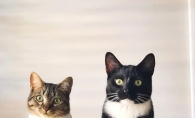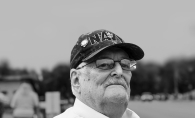Artistic inspiration could be considered a natural resource throughout the splendid Lake Minnetonka area, which is layered with natural and architectural beauty that lends itself to creativity. In the midst of pastoral vistas, some local artists are discovering ways to express their ingenuity through fiber and textile arts. This month, we introduce you to four lake-area artists who are connecting to age-old arts through basketry, crocheting, embroidery, felting and weaving.
The Textile Center in Minneapolis offers classes, long-term artist residences and programming, and provides a venue for artists to sell their wares. It has four galleries, a textile library and about 200 classes a year for all ages and skill levels, and a professional-grade dye lab. The center, home to 29 affiliated guilds, was founded by fiber artists and patrons in 1994. Its mission is to inspire and support artists, increase public access and awareness, promote diversity, preserve skills and traditions, and offer a central networking resource.
“The people whose works are exhibited here, the textile makers and fiber artists, come from all walks of life,” says director of administration Nancy Gross. “Other organizations might have some of the resources that Textile Center has, but only encompass one medium, like quilts—not the full gamut of fiber art techniques, which include weaving, quilting, knitting, sewing, dyeing, felting, needlework, lacemaking, basketry and beading.”
Sherri West
Sherri West was a former board member of the Textile Center, and the center continues to support her art. “It’s a unique organization,” she says. “It brings together these makers in myriad techniques.” West refers to the center as a home where artists can gather in creative communion.
West, a former art teacher, expresses her artistry through basketry. She creates vessels that “aren’t intended to do any work besides providing entertainment,” she says, though she hopes to share an appreciation for the natural world through her art. Many of her baskets include beadwork.
As an art education student at the University of Arizona, West was exposed to the basketry arts of southwestern American Indian communities. After taking some classes in the art form, she was hooked. “The weaving resonated for me,” she says. “I’m so tactile. It was a good fit for me.” While living in Arizona, she became familiar with working with date palm and yucca; time spent living in California exposed her to other plant materials like philodendron and eucalyptus; and Michigan introduced red dogwood and willow. Minnesota offered birch bark and more willow for West to use in her work. She also enjoys working with twined waxed linen. “It’s like working with thread,” she says. While natural materials offer a breadth of textures, the introduction of color can be a tricky proposition. For West, using too much color can feel like a risk. “Sometimes, I feel like I’m stepping out if I add color,” she says.
West doesn’t have to look far for inspiration. Her studio peers out over treetops and onto Silver Lake. “Nature offers a lot of inspiration,” West says, noting the National Parks system is represented in a number of her pieces. Hiking, especially, offers the artist a chance to squirrel away materials, including acorns and seedpods, for future projects that offer her spiritual respite. “I work because I have to,” West says. “It’s almost like therapy for me. There’s something really centering about the repetition of the material. It gives me a chance to be in my own thoughts.”
Debra Gangelhoff
Debra Gangelhoff began stitchery and embroidery when she was in her 20s—an unusual hobby for a young woman, but Gangelhoff sees a growing popularity in the art form. “I see a lot of young people working with their hands now,” she says. The self-taught artist (who used to own a gallery and gift shop in Wayzata) has long enjoyed creating handmade items and making home goods, so she combined those interests.
Beginning in 2006, she has been designing and selling pincushions and eyeglass cases. The pincushions and cases serve practical purposes with a little flair, but the pincushions often lead a pleasant double life—piling up in glass vessels or baskets, for example, as a décor additive, which speaks to the trend of using items in unexpected ways. Gangelhoff’s wares can be found at the Lanesboro Art Center, the Northfield Arts Guild and locally at Stitchville USA.
Gangelhoff’s success didn’t come without a lot of work. “I did a lot of research in [needlework styles from around the world] for a while,” she says. Her diligence is evident in the curves and floral homages she creates when her needle and thread conspire to create her signature style. Gangelhoff appreciates a scope of style—from Scandinavian to Tudor—and is particularly adept at scrolls and curves.
“It has kind of a folk art look to it,” Gangelhoff says of her work, noting that she loves to introduce unlikely color partners to create marriages made in hue heaven. “I’m a person who doesn’t like black and white,” she says. “A lot of people think there are rules to color, and I don’t think there necessarily are.” She draws inspiration from studying beadwork and embroidery in museums, eyeing the curve of a building and discovering nature’s palette. “You don’t get a bad color combination in the garden,” she says.
See Debra's work at her esty shop.
Kathy Mack
Kathy Mack began weaving with conventional materials, including cotton and wool fibers, but today she brings an element of social responsibility to her creations, making totes and purses out of recycled plastic bags. “It’s really fun to do because I can make something out of recycling, and it’s something people can use,” she says. The retired special education teacher doesn’t have to look far for her materials. “When people heard I was doing this, I started finding bags of plastic bags on my doorstep,” she says.
Despite having an abundance of plastic, working with provided, rather than culled, materials can test Mack. “I’m challenged a bit because I have to figure out a design with the colors I get,” she says. With the use of a floor loom, Mack is able to make more complex patterns. Fabric remnants are used for interior pockets, and buttons are added for closures and visual interest.
The wares are available at the Minnetonka Center for the Arts and the Textile Center, and at several other spots around the state. Prices range from $25 to $45.
“The creating is the most fun in what I do,” Mack says. “I love color.” She adds, “I enjoy making things that people like and want to enjoy.
Pat Carter
Pat Carter, who lives in Deephaven, had her own epiphany while taking a felt-making class at Gale Woods Farm in Minnetrista. “It was just a revelation that you could take wool fibers, water, a little soap and rubbing, and convert fibers into a solid form,” she says. Inspired to continue learning about the art of wet felting, Carter attended classes at the Textile Center. “The Textile Center is just a great resource,” she says, noting that she’s also met other artists there and joined the Minnesota Feltmakers Guild.
Carter has a fulfilling career as a health lawyer, but she finds a different kind of satisfaction in her artistry. Her inspiration comes from nature and everyday objects. “I look at something and think, ‘You can make that out of felt,’ ” she says. Whimsy finds its way into Carter’s art. Her piece Scared Bunny screams silly, not scary. Wave presents a study in blue ombré in the form of a vessel. Charming Pumpkin, with curled vines and a creamy orange rind begs for an invitation to stay year-round as an all-season décor fixture.
Drawing from her experience as an attorney, Carter keeps copious notes, jotting down project ideas and making sketches of future projects. Carter, who enjoys three-dimensional work, is preparing a piece that features a large tropical fish with elaborate elements and “lot of character,” she says. “It will be an experiment in a lot of surface designs and bright colors.” She also is interested in working on a series of Day of the Dead designs. Carter is intrigued by elaborate sugar skull designs. Her interests continue to expand, and nuno felting, which includes marrying felt and other fabrics like silk, has piqued her artistic curiosity.
Experience the art of these and other artists at the Textile Center, 3000 University Ave. SE, Minneapolis; 612.436.0464. Admission is free.









